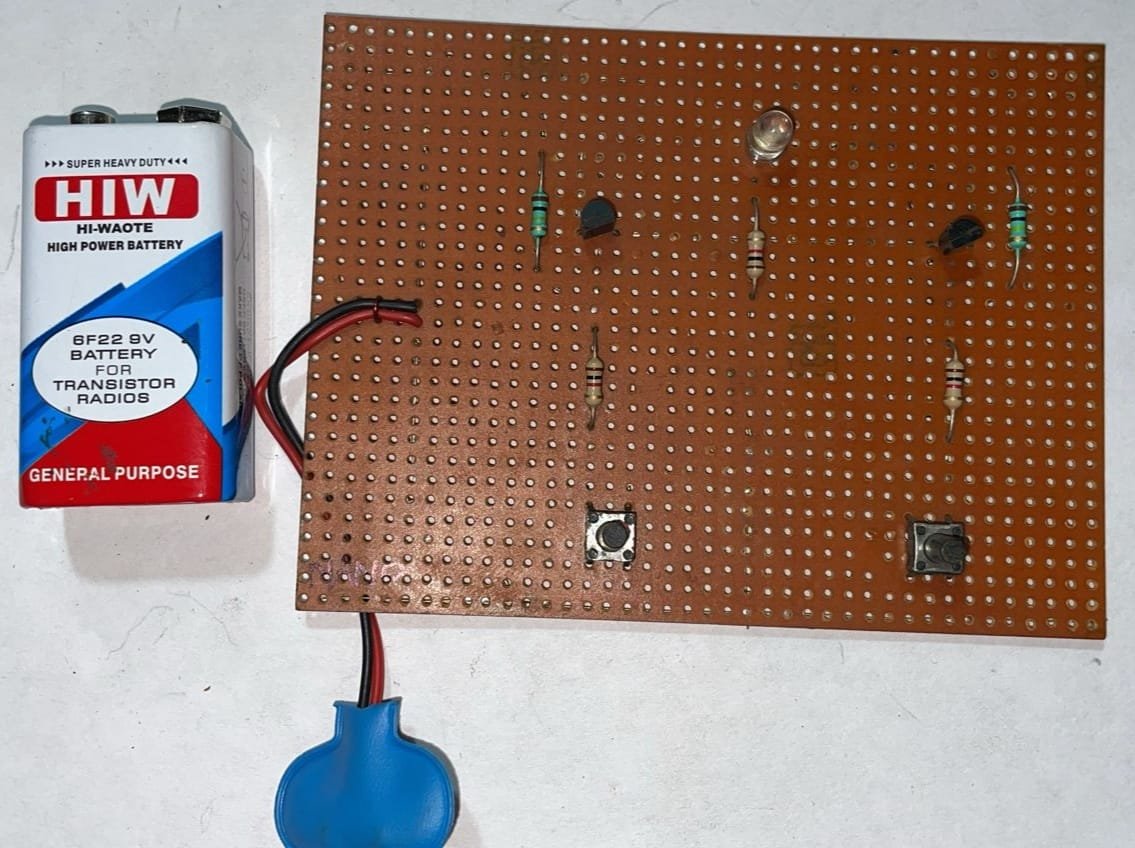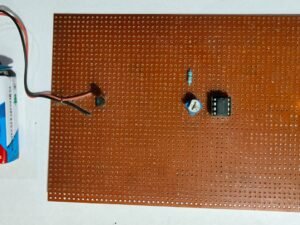NAND Gate
4 in stock
Click Here to Download the Circuit Diagram of “NAND Gate”
Discover how a NAND gate operates, a fundamental digital logic gate crucial for building complex circuits and performing binary operations.
₹295.00 ₹342.20 (Incl. GST)
4 in stock
NAND Gate Mini Project
The NAND Gate Mini Project is a simple yet educational project designed to introduce beginners to the world of digital logic circuits. The NAND gate (short for NOT AND) is one of the most essential building blocks in digital electronics. It is a universal gate, meaning that any other logic gate (AND, OR, NOT, NOR, XOR) can be constructed using only NAND gates. This project will help students and hobbyists understand how a NAND gate works and its importance in designing more complex circuits.
Key Components:
- NAND Gate IC: Typically, an IC like the 7400 series is used for this project. It contains four NAND gates, which can be wired for various configurations.
- Resistors and LEDs: Resistors are used to control the current, while LEDs provide a visual indication of the output.
- Switches: Used to control the inputs manually, allowing users to change the logic levels and observe the output behavior.
- Breadboard: For easy circuit assembly and experimentation.
How the NAND Gate Works: The NAND gate is a combination of an AND gate followed by a NOT gate. It produces a low output (0) only when both inputs are high (1). If one or both inputs are low, the output is high (1). In essence, the NAND gate inverts the output of an AND gate.
- Truth Table for NAND Gate:
| Input A | Input B | Output (A NAND B) |
|---|---|---|
| 0 | 0 | 1 |
| 0 | 1 | 1 |
| 1 | 0 | 1 |
| 1 | 1 | 0 |
Circuit Design:
- Set up the NAND Gate IC: Connect the power and ground pins of the NAND gate IC (such as 7400 series) to the power supply on the breadboard.
- Input Control: Attach two switches to control the input states (A and B) of the NAND gate. These will allow the user to toggle between logic high (1) and logic low (0).
- Output Display: Connect the output pin of the NAND gate to an LED. The LED will turn on if the output is high (1) and off when the output is low (0).
- Experimentation: By manually toggling the switches, users can apply different input combinations and observe the output of the NAND gate.
Applications:
- Universal Gate: The NAND gate can be used to construct any other logic gate, such as AND, OR, and NOT. This project can be extended to build other gates using only NAND gates.
- Digital Logic Training: This project is ideal for introducing students to digital logic design and how logic gates are used in electronic circuits.
- Practical Logic Circuits: NAND gates are found in many digital systems, such as processors, memory units, and control circuits. Understanding their operation is crucial for anyone studying electronics or computer science.
Advantages:
- Hands-on Learning: This mini project provides a tangible way to learn about digital logic by physically constructing and testing a circuit.
- Affordable and Easy to Assemble: The components are readily available and inexpensive, making it suitable for beginners or educational purposes.
- Expandable: Since the NAND gate is a universal gate, this project can easily be expanded to include other types of gates and more complex logic circuits.
Conclusion: The NAND Gate Mini Project is an excellent introduction to digital logic for beginners. It provides a hands-on experience with one of the most fundamental components of digital electronics. By understanding how the NAND gate works and experimenting with different input combinations, users can gain a deeper understanding of logic gate functions and how they contribute to more complex digital circuits. This project lays a strong foundation for further exploration of digital electronics and logic design.
| Weight | 0.00 kg |
|---|---|
| Dimensions | 0.00 × 0.00 × 0.00 cm |





